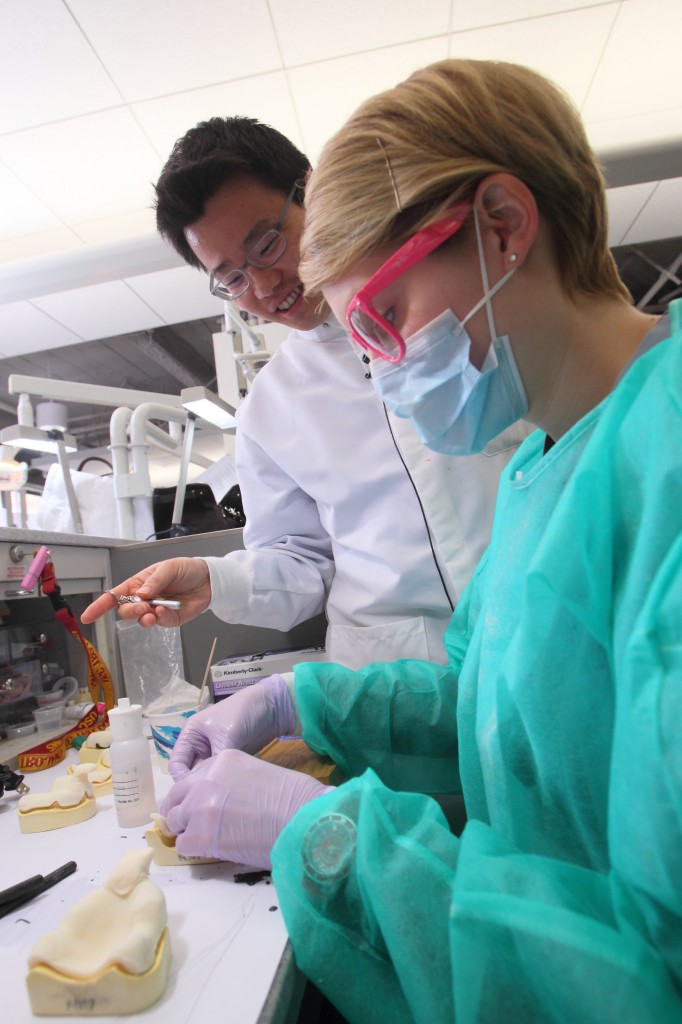Journal of Dental Education Showcases Ostrow’s Successful Curriculum

Posted
02 Apr 14
A “true partnership” between students, faculty and school leadership is what makes the Ostrow School of Dentistry’s doctor of dental surgery curriculum so successful, said Ostrow Associate Dean of Academic Affairs and Student Life Mahvash Navazesh.
Navazesh and Ostrow Associate Professors Sandra Rich and Arnold Tiber published “The Rationale for and Implementation of Learner-Centered Education: Experiences at the Ostrow School of Dentistry of the University of Southern California” in the February 2014 issue of the Journal of Dental Education.
The article comes after a 360-degree evaluation of the DDS curriculum, which had been reworked and streamlined before going into effect in 2010. The Ostrow graduating classes of 2014 include the first DDS class to have spent all four years of the program with the new curriculum.
“Learner-centered education,” or LCE, is an educational philosophy that encourages student involvement in the learning process through dialogue, engagement, and reflection. At the Ostrow School of Dentistry, it especially means providing a curriculum that includes multiple methodologies—from traditional lectures to case-based learning and small group discussion—to promote interactive, student-centered education and lifelong learning skills.
This article is among the first to examine LCE’s usage at a dental school, and the results have been incredibly encouraging, Navazesh says. Students and faculty have responded positively to the streamlining of coursework: total courses over the four-year program decreased to 44 courses from 190, which brings students into the clinic full-time a semester earlier than before.
In surveys given as part of the evaluation, more than 90 percent of students reported feeling satisfied with the depth and breadth of their education, and more than 95 percent said they felt completely prepared to being their dental careers after graduation.
“We have a large, diverse class,” Navazesh says. “With a wide variety of teaching modalities, we have been more successful in bringing out the best in our students.”
Navazesh says the Ostrow School of Dentistry is on the cutting edge regarding dental education, and she hopes the article will provide other dental educators across the nation with ideas and inspiration for how they can apply the learner-centered education philosophy to their own schools.
“People can look to us and see that our curriculum is working,” she says. “When everything in the dental profession is changing so rapidly, our students are ready.”
Update – May 14, 2014
Another manuscript from Navazesh and her team, “Triple Jump Examination Evaluation of Faculty Examiners by Dental Student Examinees,” was published on May 1, 2014. The study concluded that faculty members, even those relatively inexperienced with TJE examining, can perform acceptable assessment from the students’ perspective. Overall, students expressed a high level of satisfaction with TJE faculty performance.